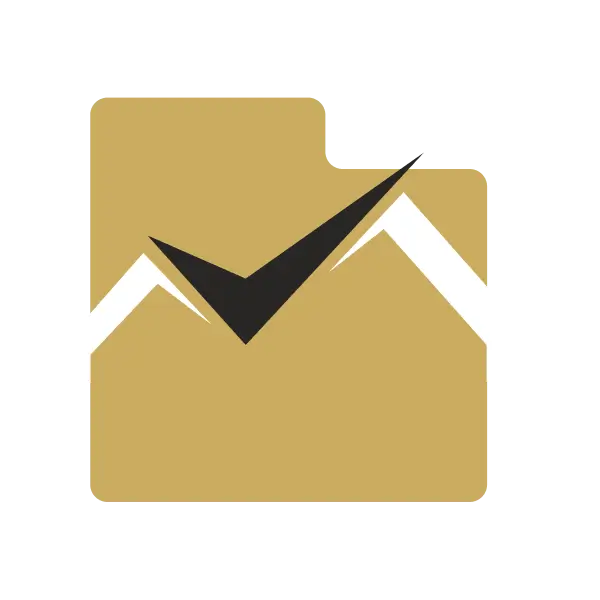How Plumbing Conditions Influence Property Value and Buyer Confidence
Plumbing systems play a key role in home inspections, buyer confidence, and long-term property value. Learn how infrastructure impacts real estate decisions.

As we approach 2024, Utah is experiencing significant growth and transformation, presenting both opportunities and challenges for its residents and newcomers. This article delves into the key developments shaping the state, from urban revitalization to pressing environmental concerns.
As 2024 unfolds, Utah is at a pivotal point of transformation. The state is experiencing rapid growth and development, which is reshaping its urban landscapes and cultural dynamics. Whether you're a long-time resident, considering a move, or just curious about the changes, understanding the key developments in Utah is essential.
Utah's appeal lies in its blend of natural beauty and thriving urban centers. From the stunning Wasatch Mountains to the bustling streets of Salt Lake City, the state offers a unique mix of outdoor adventures and metropolitan amenities. However, with growth comes challenges, and 2024 is set to be a year of significant changes.
One of the most noticeable changes in Utah is the transformation of downtown Salt Lake City. Once a modest city, it has grown into a vibrant and bustling mid-sized metropolis. This transformation is particularly evident in the skyline, which has seen the addition of several new high-rise buildings.
In 2024, the completion of the Astro Tower marks a significant milestone for Salt Lake City. Standing over 450 feet tall, it is now the tallest building in Utah. While this height might not seem impressive compared to skyscrapers in larger cities, it represents a new era for Salt Lake City, where vertical growth is becoming more common due to limited horizontal expansion space.
The Astro Tower features residential units with stunning views of the Wasatch Mountains. It's a symbol of the city's upward growth and a testament to the increasing demand for urban living spaces. The tower's south and east-facing units offer picturesque views, making it a desirable location for new residents.
The growth isn't limited to the Astro Tower. Another significant project is the Worthington Tower, set to offer 359 residential units. These new buildings are part of a broader trend of residential development in downtown Salt Lake City, catering to the growing population that prefers urban living.
As more people choose to live in the city center, the demand for amenities and services has increased. This has led to the revitalization of many city blocks, with new restaurants, hotels, and mixed-use developments springing up. Areas that were once considered dilapidated are now thriving hubs of activity.
Downtown Salt Lake City is evolving into a lively urban area. On any given night, the city is bustling with people visiting shops, dining at new restaurants, and enjoying the vibrant atmosphere. This is a significant change for a city that was not traditionally known for its nightlife.
However, this rapid growth and change have not been without friction. Some long-time residents feel nostalgic for the smaller, more familiar city that Salt Lake once was. The transformation has brought mixed feelings, as the city they knew evolves into something new.

Despite the mixed reactions, the growth of downtown Salt Lake City is a sign of the state's overall development. The changing skyline reflects a shift in how people view and use the city. It's no longer just a small city in the west; it's becoming a significant urban center with its unique character and challenges.
As Utah continues to grow, managing this growth will be crucial. Balancing the needs of new residents with the desires of long-time locals will be an ongoing challenge. However, the developments in downtown Salt Lake City are a testament to the state's ability to adapt and thrive amid change.
The University of Utah is making headlines this year as it officially joins the Big 12 Conference. Starting this fall, the Utes will compete in one of the nation's most competitive college football leagues. This move marks a significant milestone in the university's athletic history, having previously been part of the Western Athletic Conference, Mountain West, and Pac-12.
College football is undergoing major changes with conference realignment across the country, and football remains the primary revenue generator in collegiate sports. It's exciting to see Utah adapt and thrive amid these shifts, ensuring they remain a key player on the national stage.
Utah's football program has built a strong legacy, supported by dedicated staff and coaches. But the university is more than just football. It boasts a range of other sports teams and a rich athletic history. Despite recent struggles in basketball, the school continues to excel in other areas.

Beyond athletics, the University of Utah is renowned for its research capabilities. Joining the Big 12 aligns the school with other top-tier institutions, enhancing its academic and athletic reputation.
One of the most exciting aspects of this transition is the renewal of the rivalry with Brigham Young University (BYU). The two schools haven't been in the same conference for years, making this a highly anticipated reunion. The "Holy War," as it's known locally, is one of Utah's premier sporting events. Fans can look forward to thrilling matchups and intense competition.
This rivalry is not just about sports; it's a cultural event that brings the community together. The renewed competition promises to keep the spirit and excitement alive for years to come.
Air quality is a major concern for both long-time residents and newcomers to Utah. While winter inversions are well-known issues, air quality problems persist year-round. Summer months often bring smoke and haze from wildfires in California, the Northwest, and even Canada.
The Wasatch Front, home to many Utah residents, sits in a geographical "bowl" that traps air and pollutants. This unique landscape makes it crucial to ensure clean air flow to maintain healthy living conditions.
Despite common perceptions, air quality in Utah has significantly improved since the 1990s. Data from the Environmental Protection Agency (EPA) confirms this trend, showing better air conditions over the decades. Cleaner-burning vehicles and the shutdown of major polluting operations, like Geneva Steel, have contributed to this progress.
However, this improvement doesn't mean the battle is over. Continuous efforts are needed to maintain and further enhance air quality. Stricter regulations on polluting industries and increased adoption of electric vehicles could play vital roles in this ongoing effort.
Ensuring clean air for future generations should remain a top priority. Policies and initiatives aimed at reducing pollution will help create a healthier environment for children and grandchildren.
Interestingly, among the top 203 metropolitan areas in the United States, Utah ranks 100th in air quality. While this is a middling position, it underscores the importance of continued improvement. Addressing air quality concerns is essential for the well-being of all Utah residents.
Water conservation is a critical topic in Utah, especially during summer months. There's a range of opinions on whether we have sufficient water resources or if we're facing a severe shortage. The reality is more nuanced. We have a plan in place and available resources, and recent years have blessed us with phenomenal snowpack that feeds our reservoirs.
One of the key strategies for water conservation is tapping into additional resources, particularly groundwater. Utah has a substantial amount of groundwater, but it's crucial to manage these resources wisely. Effective management ensures we aren't overly dependent on annual snowfall to meet our water needs.
Our reservoir system, fed by snowfall in the Wasatch Mountains, plays a vital role in providing culinary water. This water sustains life along the Wasatch Front and throughout Utah. The challenge lies in capturing and storing this water efficiently to ensure a steady supply year-round.
To ensure long-term sustainability, we must adopt practices that conserve water and reduce wastage. This includes using water-efficient appliances, fixing leaks, and adopting xeriscaping in our gardens. Public awareness and community involvement are also essential in promoting water conservation.
The Great Salt Lake has been a focal point of environmental concern in recent years due to its shrinking size. However, recent efforts have led to some restoration, making the lake safer and healthier. Protecting this vital natural resource is crucial for the well-being of Utah's residents.
If the Great Salt Lake were to completely dry up, the exposed lake bed would release harmful dust, including arsenic, into the air. This would have severe consequences for air quality and public health along the Wasatch Front, potentially making the area uninhabitable.
Utah's water system is intricately connected. Snowfall in the Wasatch Mountains provides the runoff that fills our reservoirs. This water then flows into Utah Lake and the Great Salt Lake via rivers like the Jordan River, Weber River, and Bear River. Ensuring that water reaches the Great Salt Lake is essential to prevent it from drying up.
Historically, the water levels of the Great Salt Lake have fluctuated. In the past, measures were taken to pump excess water out of the lake to prevent flooding. Today, we face the opposite challenge of maintaining sufficient water levels. Learning from past experiences can guide our current conservation efforts.
Looking ahead, it's crucial to continue efforts to restore and maintain the Great Salt Lake. This involves not only managing water flow but also addressing broader environmental factors. With continued focus and community support, we can ensure the lake remains a vital and healthy part of Utah's ecosystem.
Utah is buzzing with excitement over the possibility of getting an NHL team. As a state that already has a strong sports culture, adding professional hockey to the mix would be a game-changer. The passion for sports here is undeniable, and the community is eager to embrace a new team.
Utahns are known for their enthusiasm and loyalty when it comes to supporting their local teams. Whether it's the Utah Jazz in the NBA or Real Salt Lake in Major League Soccer, fans show up in droves. Adding an NHL team would not only diversify the sports offerings but also bring in new fans who are eager to experience the thrill of hockey.
Hosting an NHL team would bring significant economic benefits to the state. From job creation to increased tourism, the impact would be substantial. Local businesses would thrive, and the state would see a boost in revenue. It's a win-win situation for everyone involved.
Having an NHL team would also provide opportunities for community engagement. Youth hockey programs could see a surge in participation, and local schools might even incorporate hockey into their sports curriculum. The team's presence would inspire young athletes and create a sense of pride within the community.
The excitement doesn't stop at the prospect of an NHL team. Utah is also a strong contender to host the 2034 Winter Olympics. This would be a monumental event for the state, bringing global attention and showcasing Utah's capabilities on an international stage.
Utah already has a proven track record, having successfully hosted the 2002 Winter Olympics. The event was a massive success, boosting the local economy and putting Utah on the map as a premier destination for winter sports. Hosting the 2034 Olympics would build on this legacy and further elevate the state's status.
Hosting the Olympics would bring significant economic and infrastructure development. New facilities, improved transportation, and increased tourism would all contribute to the state's growth. The long-term benefits would be felt for years to come, making the investment worthwhile.
While some locals may have reservations about the potential growth and changes, the overall impact on the community would be positive. The Olympics would create jobs, boost local businesses, and provide opportunities for community engagement. It's an event that brings people together and fosters a sense of unity and pride.
The announcement of the host city for the 2034 Winter Olympics is eagerly anticipated. If Utah is chosen, it will be a momentous occasion, marking another chapter in the state's rich history. The community is ready to embrace the challenge and showcase the best of what Utah has to offer.
Utah has consistently ranked as the number one state in the country, and it's easy to see why. The state offers a unique blend of natural beauty, economic opportunities, and a high quality of life. From the majestic Wasatch Mountains to the bustling tech hubs in Salt Lake City, Utah has something for everyone.
One of the key reasons for Utah's top ranking is its robust economy. The state boasts a low unemployment rate, a thriving job market, and a business-friendly environment. Companies are flocking to Utah, bringing with them new job opportunities and economic growth. This has made Utah an attractive destination for both businesses and individuals looking to relocate.
Utah's quality of life is another factor that contributes to its top ranking. The state offers a wide range of outdoor recreational activities, from hiking and skiing to mountain biking and rock climbing. The natural beauty of the state is unparalleled, and residents take full advantage of the scenic landscapes.
In addition to outdoor activities, Utah also offers excellent educational opportunities, top-notch healthcare, and a strong sense of community. These factors combine to create an environment where residents can thrive and enjoy a high standard of living.
Utah's community and culture also play a significant role in its ranking. The state is known for its friendly and welcoming residents, as well as its strong sense of community. Whether it's through local events, community centers, or volunteer opportunities, Utahns are always looking for ways to connect and support one another.
The state's cultural diversity is also a highlight. With a mix of urban and rural areas, Utah offers a variety of cultural experiences. From the vibrant arts scene in Salt Lake City to the traditional festivals in small towns, there's always something happening in Utah.
The housing affordability crisis is one of the most pressing issues facing Utah today. With the state's rapid growth and increasing population, the demand for housing has skyrocketed, leading to a significant shortage of affordable homes.
In response to this crisis, the Utah state legislature has introduced a series of bills aimed at increasing the supply of attainable homes. These bills focus on free market policies rather than subsidies, providing cities and developers with the tools they need to build more affordable single-family units.
One such bill, HB 476, outlines the steps cities must take when new development proposals are submitted. This bill aims to streamline the process for developers and builders, making it easier to get new housing projects off the ground.
Despite these efforts, there are concerns about whether these measures will be enough to make a significant impact. While lawmakers are optimistic, the real test will be in the implementation and effectiveness of these policies.
The biggest challenge is ensuring that all cities and municipalities work together to address the housing shortage. The "not in my backyard" mentality can hinder progress, and it's essential for communities to come together and support these initiatives.
The data from the University of Utah's Kem C. Gardner Policy Institute indicates that the housing shortage in Utah will worsen in 2024, with an estimated increase of 37,000 additional units needed. This underscores the urgency of ramping up building efforts and ensuring that infrastructure is in place to support new developments.
Ultimately, the goal is to make housing more affordable and attainable for all residents, both current and future. By addressing the housing crisis head-on, Utah can continue to be a top-ranked state and provide a high quality of life for its residents. For more insights, explore our guides on Utah's housing market update and the challenges of relocating to Utah.
Posted by Kristopher Larson
Related Articles:
Access all your saved properties, searches, notes and more.
Access all your saved properties, searches, notes and more.
Enter your email address and we will send you a link to change your password.


Your trusted MLS search companion